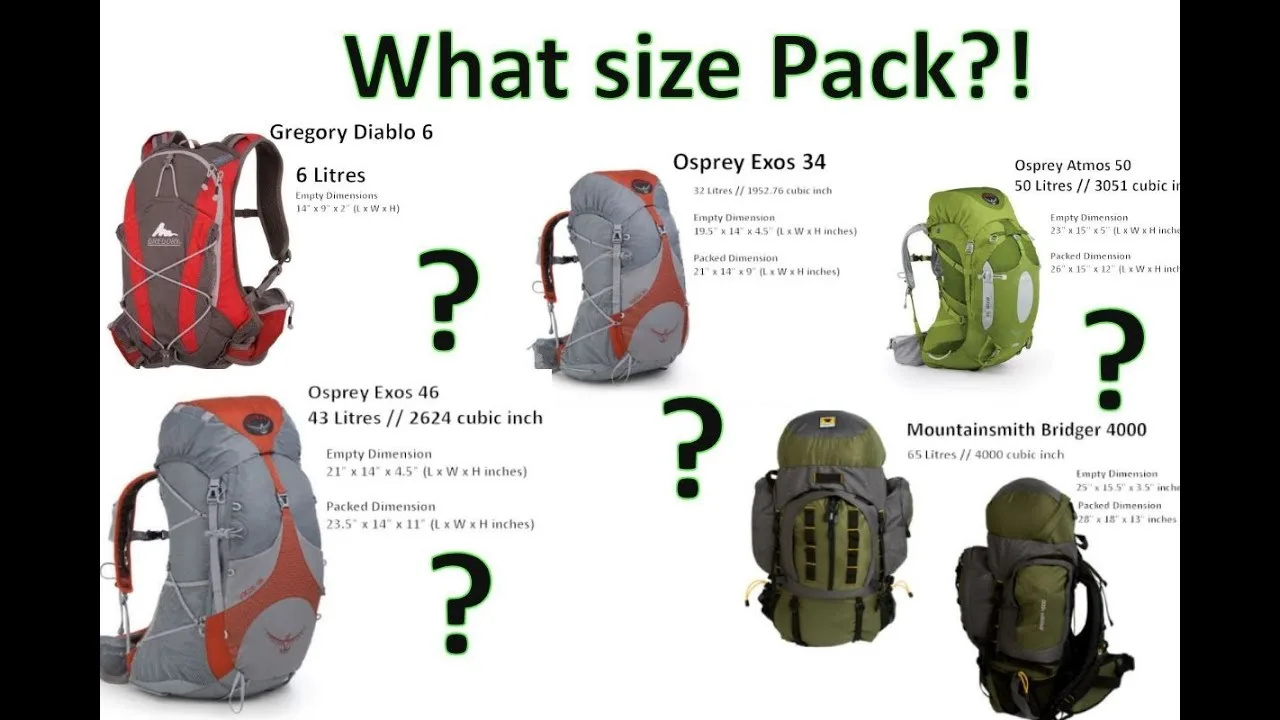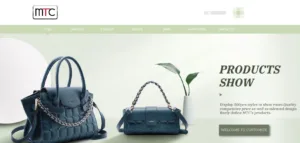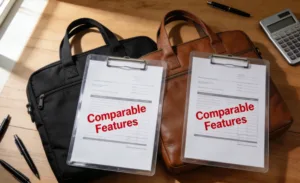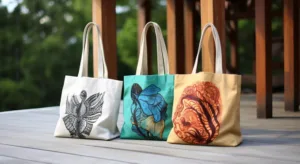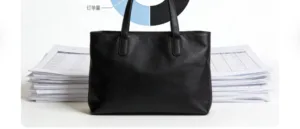Choosing the right backpack can make a huge difference in comfort, convenience, and overall usability. Backpack volumes typically range from 10 liters for compact daypacks to 50 liters or more for long-distance travel and hiking backpacks, and selecting the proper size ensures you carry everything you need without unnecessary bulk. Whether you are a student carrying books, a traveler exploring new destinations, a hiker trekking through trails, or a daily commuter navigating the city, understanding backpack sizes is essential.
For those looking for a more unique solution, custom backpack options offer tailored backpack solutions that perfectly match your requirements. From custom backpack sizes designed to fit specific items, to personalized backpacks with specialized compartments, these options allow you to optimize space, comfort, and style. With the right guidance, choosing the right backpack—standard or custom—becomes a seamless and professional process.
Contents
What Does Backpack Size Mean?

Understanding backpack size is more than just knowing how big a bag looks. Backpack size determines how much you can carry comfortably, how the weight is distributed, and which activities the bag is suitable for. Choosing the right size can prevent back strain, improve organization, and ensure your belongings are easily accessible. Whether you opt for a standard backpack or a custom backpack, knowing the dimensions and volume is essential for making the right choice.
Backpack Dimensions: Length × Width × Height
Backpack size is usually measured in three dimensions: length, width, and height. These measurements give a rough idea of the bag’s physical footprint and how it will fit on your back. For example, a daypack might measure around 30 cm × 15 cm × 45 cm, while a larger hiking backpack could be 35 cm × 25 cm × 60 cm or more. These dimensions also help when customizing a backpack, as custom backpack sizes can be adjusted to accommodate specific items or body types.
Backpack Volume: Liters (L)
While dimensions show the bag’s external size, volume tells you how much it can hold. Backpack capacity is typically expressed in liters (L). Small daypacks may range from 10–20L, ideal for carrying essentials like a water bottle, notebook, or light jacket. Medium backpacks of 20–35L suit commuters or short trips, while large backpacks of 40–50L+ are designed for long hikes, travel, or carrying sports equipment. Personalized backpacks often allow you to optimize this volume, adding compartments or expanding sections to meet your exact needs.
How Size Affects Usage
Backpack size directly influences where and how you can use it. A 15–20L backpack is perfect for urban commuting or a quick day trip, but it would be insufficient for a weekend hiking adventure. Conversely, a 50L backpack might be overkill for daily commuting, adding unnecessary weight. Understanding the relationship between size, volume, and activity ensures you select a bag that is both functional and comfortable. Tailored backpack solutions can bridge this gap, providing the right size for unique requirements while keeping ergonomics and style in mind.
Different Backpack Volumes & Their Uses
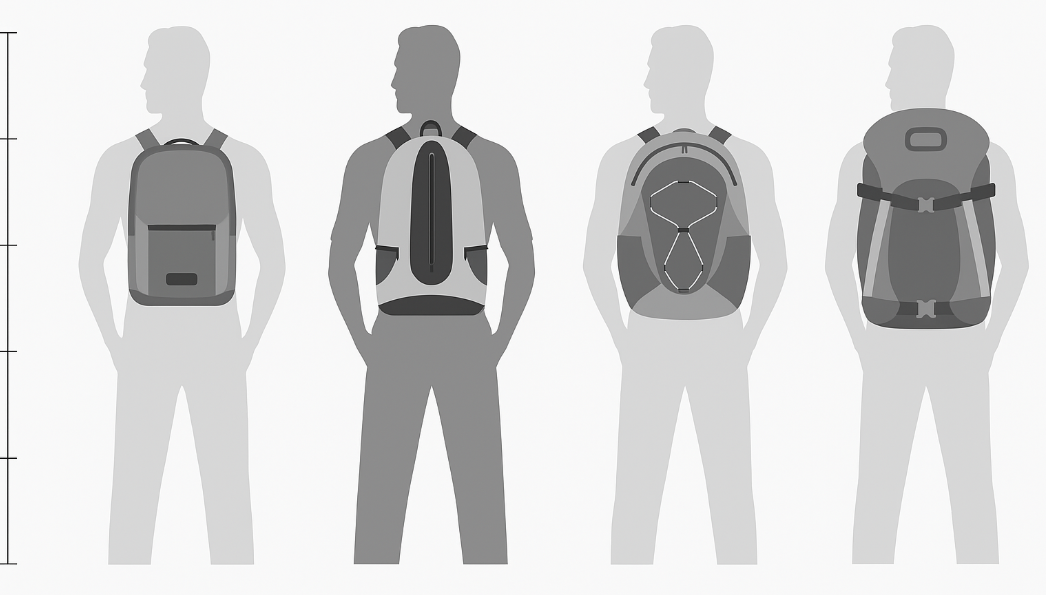
Choosing the right backpack volume is crucial for ensuring comfort, practicality, and durability. Different capacities serve different purposes, and understanding these distinctions can help you select a backpack that fits your lifestyle. Whether you are commuting, traveling, hiking, or need a specialized bag, knowing the right size and design features makes all the difference. Custom backpacks offer additional flexibility, allowing you to tailor compartments, padding, and aesthetics to your exact needs.
1. Small Backpacks (10–20L): Daily Commute & Short Trips
Use Cases: Ideal for daily commuting, city exploration, or a quick day trip. Perfect for carrying essentials such as a tablet, lunch, water bottle, and a few personal items.
Design & Craft Considerations:
Lightweight construction with high-quality fabrics like nylon or polyester
Minimalist compartmentalization for easy access
Ergonomic shoulder straps for comfort during short wear periods
Optional customization: embroidered logos, color patterns, or small functional pockets (custom backpack sizes)
Practical Experience: When carrying about 5–7 lbs (2–3 kg) of essentials, the backpack feels light and balanced. A small personalized backpack allows quick access to items like a tablet or keys without feeling bulky, making it perfect for commuting or short urban trips.
2. Medium Backpacks (20–35L): Short Trips & Outdoor Activities
Use Cases: Suitable for short trips, daily outdoor activities, or weekend excursions. Can hold clothes, snacks, a water bottle, and basic gear.
Design & Craft Considerations:
Multiple compartments and internal dividers for better organization
Durable fabrics and reinforced stitching for moderate loads
Padded back panels for comfort during extended wear
Customizable options: adjustable straps, removable compartments, or personalized prints (personalized backpacks)
Practical Experience: Carrying 10–15 lbs (4–7 kg) for a half-day hike or a short weekend trip, the backpack feels snug but manageable. Well-designed shoulder straps and padded back panels reduce strain. A medium custom backpack can include tailored compartments for electronics or snacks, keeping items organized without feeling overloaded.
3. Large Backpacks (35–50L+): Long Trips, Hiking & Camping
Use Cases: Designed for long-distance travel, hiking, or camping. Can accommodate clothes, sleeping bags, gear, and extra supplies.
Design & Craft Considerations:
High-capacity main compartments with multiple internal and external pockets
Reinforced zippers, heavy-duty fabrics, and water-resistant coatings
Advanced ergonomic features: chest and waist straps, ventilated back panels
Customization potential: tailored backpack solutions for specific gear, hydration systems, or extra padding (tailored backpack solutions)
Practical Experience: When fully loaded with 20–35 lbs (9–16 kg), a large backpack’s weight is distributed across the hips and shoulders thanks to chest and waist straps. A custom large backpack can include specialized compartments for fragile items, hydration packs, or outdoor gear, making long hikes or travel more comfortable while keeping essentials organized.
4. Specialized Backpack Capacities: Student Bags, Hiking Packs, Carry-On Bags
Use Cases: Includes backpacks designed for students, mountaineers, or travelers with airline carry-on restrictions.
Design & Craft Considerations:
Student backpacks: lightweight, padded laptop compartments, easy-access pockets
Hiking backpacks: modular compartments, hydration pack compatibility, robust materials
Carry-on backpacks: compact yet expandable, easy-to-carry handles, TSA-friendly designs
Practical Experience: A student carrying 7–10 lbs (3–5 kg) of books and electronics finds the backpack comfortable with well-padded straps and back support. Hikers using 25–30 lbs (11–14 kg) backpacks benefit from customized compartment layouts, reducing the need to constantly rearrange gear. Travelers appreciate carry-on backpacks that remain light yet can expand slightly for souvenirs or extra clothes, showing the versatility of custom backpacks in real-world use.
How to Measure and Compare Backpack Volume for Custom Solutions
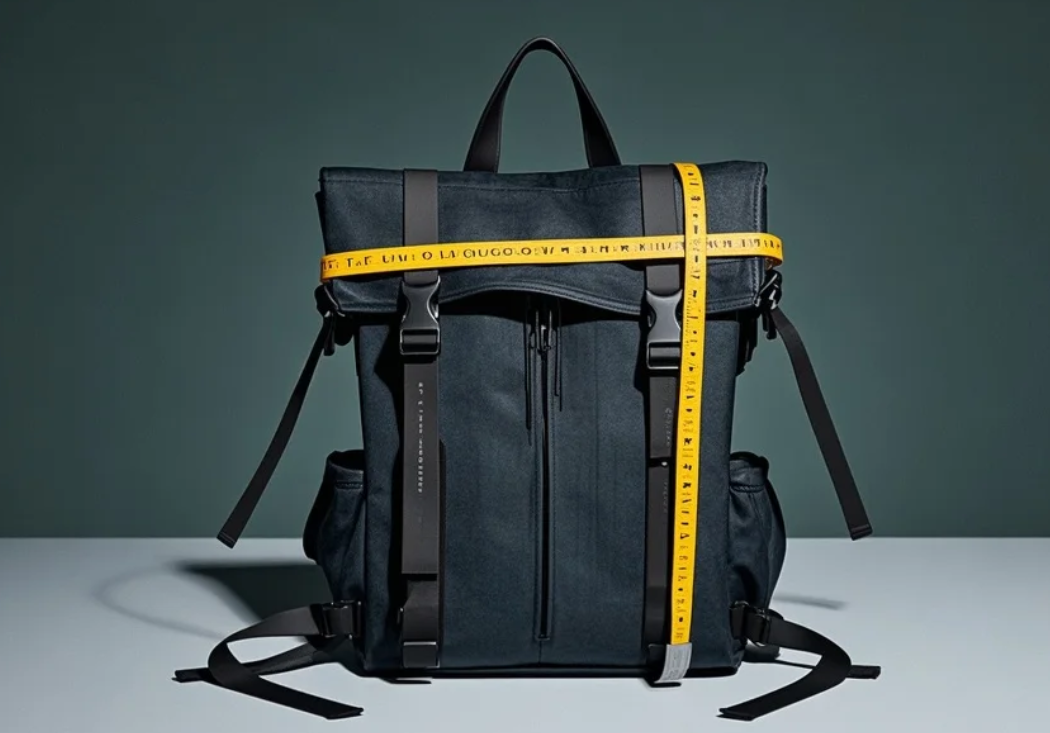
For brands and businesses sourcing backpacks, knowing the true volume and fit is essential. A backpack’s capacity affects comfort, usability, and customer satisfaction. While specifications like “50L” are helpful, actual usable space can differ. Sunteam offers both standard and custom backpack solutions, allowing companies to deliver backpacks that match their clients’ needs precisely.
1. Check Manufacturer Specifications
Main volume: Usually listed in liters (L). If only cubic inches are provided, divide by 61 (e.g., 3,050 cu in ≈ 50L).
Expandable vs. base volume: Some backpacks list two numbers (e.g., 40L / 55L). Note both to understand true capacity.
Compartments: High-end backpacks often specify individual sections (main, lid, front pocket), giving a clearer picture of space allocation.
Sunteam advantage: Every backpack can be customized with clearly defined internal volumes and compartments to meet client requirements.
2. Verify with Practical Tests
Water bag test: Use 1L sealed water bags to fill each compartment and total the volume.
Foam block fill: Cut foam into 1L blocks to fill compartments and count blocks for volume estimation.
Balloon method: Inflate balloons inside compartments for irregular shapes, though measurement may vary slightly.
These tests help validate the specifications and ensure backpacks meet functional expectations. Sunteam provides verified capacity testing for all prototypes, giving businesses accurate data before mass production.
3. Include External and Expandable Storage
External pockets, hip belt pouches, or roll-top panels can add 5–15% extra space. When comparing backpacks or designing custom solutions, include these areas to reflect true usable volume. Sunteam’s custom bag designs allow optional external compartments, modular inserts, and expandable panels, giving brands flexibility without compromising ergonomics.
4. Match Volume to Gear List
Create a packing list of all essential items and weigh them.
Leave 10–15% extra space for unexpected items like rain gear or souvenirs.
Test the pack: fill it and carry it around to check comfort and usability.
5. Optimize with Sunteam Custom Solutions
If off-the-shelf backpacks aren’t sufficient, Sunteam can deliver:
Precise volume adjustment for niche markets or specific client needs
Verified capacity reports based on internal testing
Functional integration: custom pockets, zip panels, modular inserts
Ergonomic design with adjustable straps, padded back panels, and tailored compartments
By combining specification review, practical testing, and smart bag customization, businesses can confidently choose or design backpacks that fit client requirements, enhance customer satisfaction, and reduce returns.
Common Misconceptions About Backpack Sizes

For businesses and brands, understanding common misconceptions about backpack sizes is key to designing or sourcing products that meet end-user expectations. Many assume that bigger is always better, or that an attractive design automatically guarantees comfort. In reality, each market segment has distinct needs, and failing to address them can lead to poor customer satisfaction and high return rates. By leveraging custom backpack solutions from Sunteam, companies can create products tailored to their clients’ specific requirements.
Bigger Isn’t Always Better
A larger backpack does not necessarily suit every purpose. For example, a 50L bag may be ideal for long hikes or travel, but it could feel cumbersome for daily commuting or city use. Businesses should analyze the intended use case and target audience to determine the optimal size. With Sunteam’s personalized backpacks, brands can adjust volumes and compartments to provide the perfect balance between capacity and usability.
Design vs. Functionality
An eye-catching backpack does not guarantee comfort or practicality. Features like padded shoulder straps, ergonomic back panels, and well-distributed compartments are crucial for long-term wear. Sunteam integrates these ergonomic considerations into custom designs, ensuring that even highly stylized backpacks remain functional and comfortable for the end user.
One Backpack Doesn’t Fit All Scenarios
A single backpack model cannot cover all user needs. Outdoor enthusiasts, students, travelers, and corporate clients all require different layouts, storage solutions, and support features.
| Misconception | Reality | B2B Solution with Sunteam |
|---|---|---|
| Bigger is always better | Size must match intended use; too large can reduce comfort | Offer custom backpack sizes tailored to daily use, travel, or hiking |
| Attractive design = comfort | Comfort depends on straps, back panels, weight distribution | Integrate ergonomic features and test prototypes with Sunteam personalized backpacks |
| One backpack fits all | Different user groups have unique needs | Provide modular or multiple variants through tailored backpack solutions |
By addressing these misconceptions and utilizing Sunteam’s B2B bag customization services, brands can develop backpacks that combine style, functionality, and precise capacity, delivering a superior product experience to their clients.
Tips for Choosing the Perfect Backpack
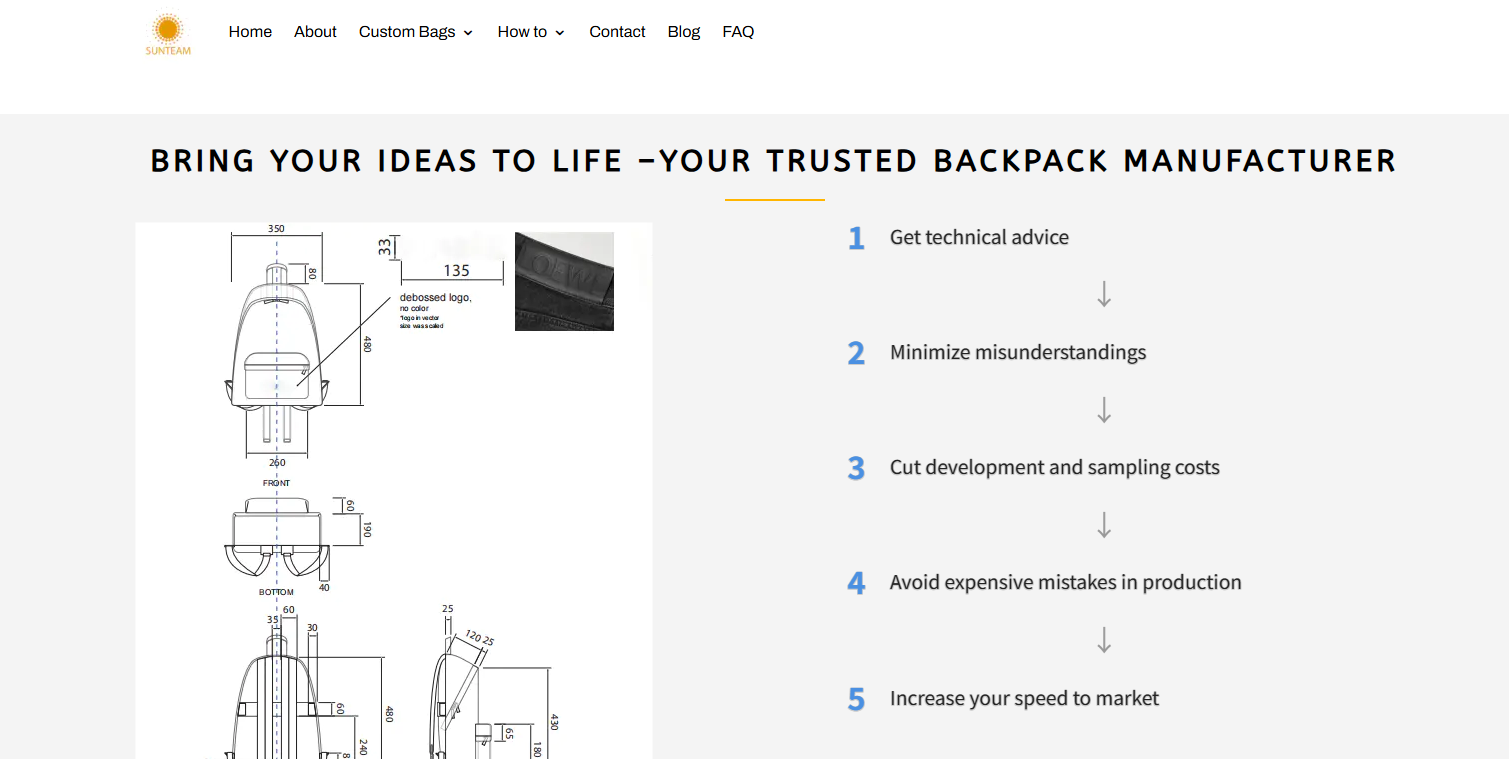
For brands and businesses, selecting the right backpack for your target market requires careful planning and testing. Here are key tips to ensure your product meets client expectations and enhances brand value:
Provide bag prototypes or sample models: Allow your team and select clients to test fit, comfort, and functionality before mass production. This helps identify potential design improvements and avoids costly mistakes.
Consider the target audience’s body types and carrying needs: Different user groups—students, travelers, outdoor enthusiasts—require varied volumes, strap configurations, and compartment layouts. Offering custom backpack sizes ensures your products suit the intended market.
Support functional customization: Integrate ergonomic straps, padded back panels, modular inserts, and expandable compartments to enhance usability. Sunteam personalized backpacks allow brands to tailor designs precisely, addressing both comfort and storage requirements.
B2B Value: By following these practices, businesses can reduce procurement risk, improve customer satisfaction, and strengthen brand loyalty, while ensuring the backpacks meet both functional and aesthetic expectations.
Conclusion
Backpack capacity, dimensions, and ergonomic design play a critical role in product success. A well-chosen or customized backpack ensures that end-users enjoy comfort, proper fit, and sufficient storage, while minimizing returns and complaints.
With Sunteam’s tailored backpack solutions and personalized backpacks, brands can deliver products that combine high-quality materials, thoughtful design, and precise functionality. For businesses seeking reliable partners, leveraging Sunteam’s OEM/ODM expertise allows the creation of backpacks that not only meet client specifications but also elevate brand value.
Action for B2B Clients: Choose a manufacturing partner that offers both precision and flexibility, like Sunteam, to develop high-quality, customizable backpacks that exceed your customers’ expectations.

